 Fatal Enquiry (Barker & Llewelyn, #6) by Will Thomas
Fatal Enquiry (Barker & Llewelyn, #6) by Will Thomas Format: ebook
Source: purchased from Amazon
Formats available: hardcover, large print, paperback, ebook, audiobook
Genres: historical fiction, historical mystery, mystery
Series: Barker & Llewelyn #6
Pages: 293
Published by Minotaur Books on May 13, 2014
Purchasing Info: Author's Website, Publisher's Website, Amazon, Barnes & Noble, Kobo, Bookshop.org, Better World Books
Goodreads
Brimming with wit, atmosphere, and unforgettable characters, FATAL ENQUIRY reintroduces private enquiry agent Cyrus Barker and his assistant, Thomas Llewellyn, and their unforgettable world of Victorian London.
Some years ago, Cyrus Barker matched wits with Sebastian Nightwine, an aristocrat and sociopath, and in exposing his evil, sent Nightwine fleeing to hide from justice somewhere in the far corners of the earth. The last thing Barker ever expected was to encounter Nightwine again—but the British government, believing they need Nightwine's help, has granted him immunity for his past crimes, and brought him back to London. Nightwine, however, has more on his mind than redemption—and as Barker and Llewellyn set out to uncover and thwart Nightwine's real scheme, they find themselves in the gravest danger of their lives.
My Review:
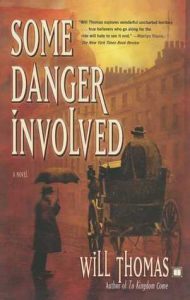 Most of the entries in the Barker & Llewelyn series, at least so far, begin with Thomas Llewelyn in some kind of VERY hot water, in the middle of a case that we haven’t yet seen the beginning of. Then his narrative winds back and we get to learn how he got into the pickle we opened with and the game is afoot.
Most of the entries in the Barker & Llewelyn series, at least so far, begin with Thomas Llewelyn in some kind of VERY hot water, in the middle of a case that we haven’t yet seen the beginning of. Then his narrative winds back and we get to learn how he got into the pickle we opened with and the game is afoot.
This time around doesn’t seem like it starts in that ‘usual’ fashion, as Llewelyn and his ‘Guv’, private enquiry agent Cyrus Barker, are sitting peacefully in their offices negotiating the precise time at which Barker will let Llewelyn go for his half-day off.
Which is when the situation goes entirely pear-shaped, and they are suddenly on the run after a coded telephone call.
It’s not until somewhere in the middle of that run for their lives that the reader figures out that this was the standard opener after all. Because this is a pickle that Barker and Llewelyn have been in since the very first book in the series, Some Danger Involved.
Barker’s old nemesis, Sebastian Nightwine, has merely been biding his time – off running his usual con games somewhere out on the fringes of the British Raj – waiting for the right opportunity to bring him back to London where he can finally finish Barker off – once and for all.
Or at least that’s Nightwine’s plan – a plan which Barker must thwart to preserve his life, his reputation AND especially the lives of all those he holds dear – even as he is aware that on one count, at least, he’s already failed.
Each believes that the other is a pawn in their long game. Llewelyn, on the other hand, is certain that he’s a pawn in both their schemes. None of them are aware that they are all being played for fools, and that there is a puppet master operating in the wings pulling ALL of their strings.
Escape Rating A+: I knew when I started this book that it would finally break the two weeks of mostly ‘meh’ reading that’s been happening around here. And it absolutely did!
But there was one story during that ‘meh’ that did rise above, and that was “How to Raise a Kraken in Your Bathtub”. You’d think that story and this book wouldn’t have much in common – but they actually do. Because underlying both stories, in spite of their very different genres, is a story about the excesses of empire, the lengths that those who are in charge or those empires will go to continue their expansion, and the desperation and necessity of those who stand in their way.
That it’s the same empire turned out to be utterly fascinating.
In this case, however, the sixth case that Thomas Llewelyn has written about his work and adventures with his boss and mentor, Cyrus Barker, the story starts out much closer to home when Barker and Llewelyn flee theirs in order to stay out of the hands of the police – who have been led astray, by a very roundabout route, by people with big dreams of empire and one man willing to exploit those dreams for his own gain.
A gain that is intended to secure Barker’s downfall and death. Poor Thomas Llewelyn is merely collateral damage in this chess game of a mystery, as Barker sets his lifelong adversary Nightwine up for a big fall even as Nightwine does the same to him.
Along the way, we – along with Llewelyn – learn a LOT more about Barker’s mysterious past. Because that’s where this case has its origins. At the same time we see the operations of the levers of power and privilege being moved by a con man running a game that is too tempting for even the savviest government officials to resist.
 What makes the story rise to an A+, at least for this reader, was the delicious irony of the ending. Nightwine returns to London with deep, well-laid plans to eliminate Barker. Barker, forced to react rather than plan, still manages to maneuver Nightwine to what he believes will be his enemy’s downfall. It’s only after the results of that inevitable confrontation have been dealt with that Barker learns that both he and Nightwine have both been played by someone neither realized was even studying their board – let alone running it.
What makes the story rise to an A+, at least for this reader, was the delicious irony of the ending. Nightwine returns to London with deep, well-laid plans to eliminate Barker. Barker, forced to react rather than plan, still manages to maneuver Nightwine to what he believes will be his enemy’s downfall. It’s only after the results of that inevitable confrontation have been dealt with that Barker learns that both he and Nightwine have both been played by someone neither realized was even studying their board – let alone running it.
Someone who still has plans for Barker – or at least for Llewelyn – but only if this particular fly steps willingly back into the spider’s den.
I had a grand time with this entry in the series, so obviously I’ll be back to see Barker and Llewelyn try to get ahead of Jack the Ripper in the next book in this marvelous series, Anatomy of Evil, the next time I’m in the mood for murder – or just in search of a ripping good read!

 The Bodies in the Library (First Edition Library Mystery, #1) by
The Bodies in the Library (First Edition Library Mystery, #1) by  The discovery of a body in the Society’s library, the morning after a contentious meeting of a local writers’ group, seems a bit too much like it’s straight out of the pages of one of the Agatha Christie novels sitting on a nearby shelf, The Body in the Library.
The discovery of a body in the Society’s library, the morning after a contentious meeting of a local writers’ group, seems a bit too much like it’s straight out of the pages of one of the Agatha Christie novels sitting on a nearby shelf, The Body in the Library. Speaking of media, however, the audio was fine, and it certainly got me over the rough first third of the book that drove me away the first time around. So I’m glad I picked it up – even though once the story finally got started I got more than caught up in it enough to want to find out whodunnit a whole lot faster than audio would allow.
Speaking of media, however, the audio was fine, and it certainly got me over the rough first third of the book that drove me away the first time around. So I’m glad I picked it up – even though once the story finally got started I got more than caught up in it enough to want to find out whodunnit a whole lot faster than audio would allow. The Marlow Murder Club (Marlow Murder Club, #1) by
The Marlow Murder Club (Marlow Murder Club, #1) by  Recommended, pretty much everywhere as a readalike for
Recommended, pretty much everywhere as a readalike for  The other thing I really liked was that, while the local police were completely overwhelmed by a serial killer in their tiny town, the reasons they were overwhelmed were much easier to understand and empathize with than the lackluster performance of the local constabulary in
The other thing I really liked was that, while the local police were completely overwhelmed by a serial killer in their tiny town, the reasons they were overwhelmed were much easier to understand and empathize with than the lackluster performance of the local constabulary in  A Mischief of Rats by
A Mischief of Rats by 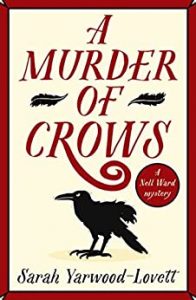 Whichever of her two personas is her alter ego, both of them are entirely too busy during the jam-packed weekend this story takes place.
Whichever of her two personas is her alter ego, both of them are entirely too busy during the jam-packed weekend this story takes place.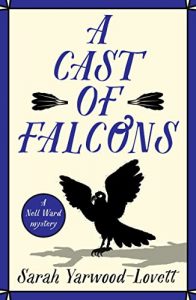 Escape Rating B-: This third book in the
Escape Rating B-: This third book in the  I admit that this is a ‘me’ thing that may not be a ‘you’ thing. Howsomever, for this reader it feels like Nell’s romantic trials and tribulations are a bit over the top, particularly as her rich and aristocratic background – along with her surprisingly functional relationship with her parents – seem to have insulated her from a whole lot of regular stresses and issues to the point where over-the-top is the only direction left.
I admit that this is a ‘me’ thing that may not be a ‘you’ thing. Howsomever, for this reader it feels like Nell’s romantic trials and tribulations are a bit over the top, particularly as her rich and aristocratic background – along with her surprisingly functional relationship with her parents – seem to have insulated her from a whole lot of regular stresses and issues to the point where over-the-top is the only direction left.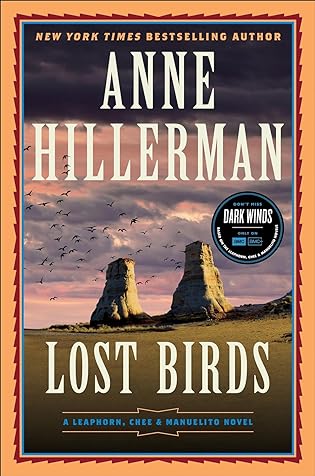 Lost Birds (Leaphorn, Chee & Manuelito #27) by
Lost Birds (Leaphorn, Chee & Manuelito #27) by 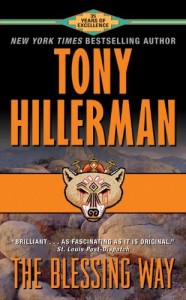 Especially, but absolutely not exclusively, to the ‘Legendary Lieutenant’ himself, retired Navajo Nation Police Lieutenant Joe Leaphorn – the original protagonist of this series back when it began back in 1970 in
Especially, but absolutely not exclusively, to the ‘Legendary Lieutenant’ himself, retired Navajo Nation Police Lieutenant Joe Leaphorn – the original protagonist of this series back when it began back in 1970 in 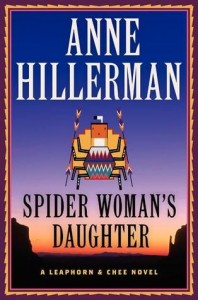 All of which made Lost Birds another enthralling chapter in this long-running saga. While I don’t think a new reader would need to start back at the very, very beginning, picking this series up with
All of which made Lost Birds another enthralling chapter in this long-running saga. While I don’t think a new reader would need to start back at the very, very beginning, picking this series up with 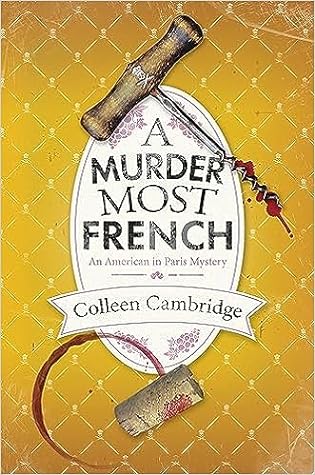 A Murder Most French (American In Paris Mystery, #2) by
A Murder Most French (American In Paris Mystery, #2) by 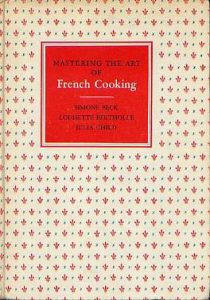 Julia Child is too busy learning French cooking, living her larger-than-life life in Paris AND at the beginning of writing her masterpiece,
Julia Child is too busy learning French cooking, living her larger-than-life life in Paris AND at the beginning of writing her masterpiece, 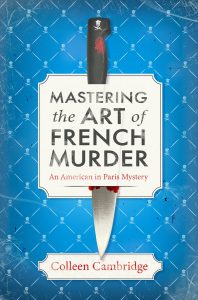 Escape Rating A+: If you loved the first book in this series – and who didn’t? – you will run, not walk to get this second book because it’s every bit as charming as the first. If you still need a bit of convincing, I’m going to get right to that.
Escape Rating A+: If you loved the first book in this series – and who didn’t? – you will run, not walk to get this second book because it’s every bit as charming as the first. If you still need a bit of convincing, I’m going to get right to that. Close to Death (Hawthorne & Horowitz, #5) by
Close to Death (Hawthorne & Horowitz, #5) by 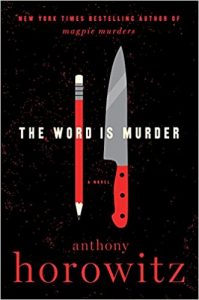
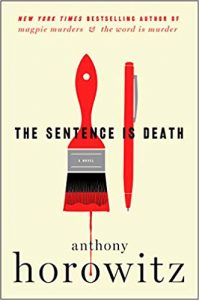

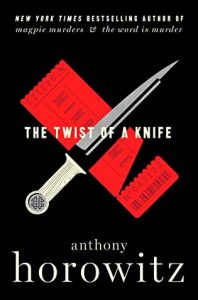
 No One Goes Alone by
No One Goes Alone by  The House on Widows Hill (Ishmael Jones #9) by
The House on Widows Hill (Ishmael Jones #9) by 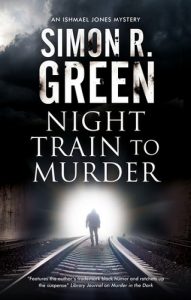 The House on Widows Hill is more of a twist on the typical English country house mystery than even Ishmael Jones and his partner Penny Belcourt usually have to contend with.
The House on Widows Hill is more of a twist on the typical English country house mystery than even Ishmael Jones and his partner Penny Belcourt usually have to contend with.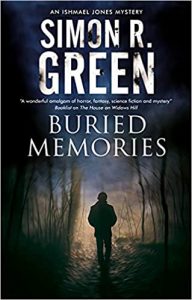 Someone in the ‘Organization’ is considering buying the place – or that’s what Ishmael and Penny are told, anyway. That night is a ‘one-night-only’ invitation to not just Ishmael and Penny as representatives of the potential buyer, but also to a whole team of “ghost botherers” (as Ishmael calls them) who have been begging – for years it seems – to get inside the old haunt. Along with one intrepid reporter who represents the family that owns the creepy pile – and really would like to get shed of the place once and for all.
Someone in the ‘Organization’ is considering buying the place – or that’s what Ishmael and Penny are told, anyway. That night is a ‘one-night-only’ invitation to not just Ishmael and Penny as representatives of the potential buyer, but also to a whole team of “ghost botherers” (as Ishmael calls them) who have been begging – for years it seems – to get inside the old haunt. Along with one intrepid reporter who represents the family that owns the creepy pile – and really would like to get shed of the place once and for all.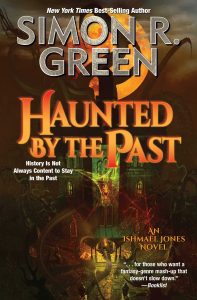 Escape Rating A-: I normally save this series for around Halloween, but I’m in the midst of a reading quandary that I hoped this book would solve – or at least beat back for a couple of days. I’m in the middle of listening to Erik Larson’s
Escape Rating A-: I normally save this series for around Halloween, but I’m in the midst of a reading quandary that I hoped this book would solve – or at least beat back for a couple of days. I’m in the middle of listening to Erik Larson’s 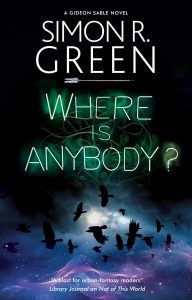 The House on Widows Hill very much has the classic haunted house vibe going on – even though with Ishmael and Penny involved the reader begins the story aware that it just isn’t going to go to any of the places that haunted houses normally go. That Ishmael gets shaken out of some of his internal certainties and securities added a bit to the ongoing arc of the series while at the same time ramping up the tension of both this book and the books in the series yet to come.
The House on Widows Hill very much has the classic haunted house vibe going on – even though with Ishmael and Penny involved the reader begins the story aware that it just isn’t going to go to any of the places that haunted houses normally go. That Ishmael gets shaken out of some of his internal certainties and securities added a bit to the ongoing arc of the series while at the same time ramping up the tension of both this book and the books in the series yet to come.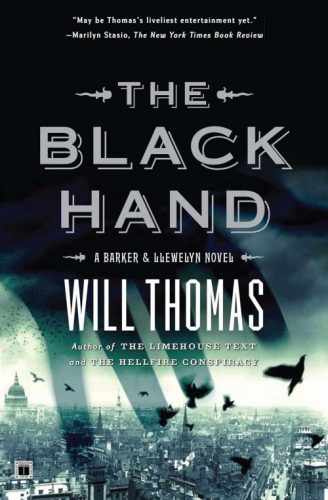 The Black Hand (Barker & Llewelyn, #5) by
The Black Hand (Barker & Llewelyn, #5) by 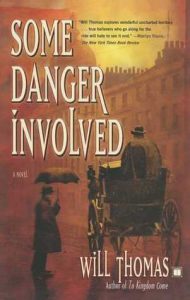 So far, at least, the
So far, at least, the 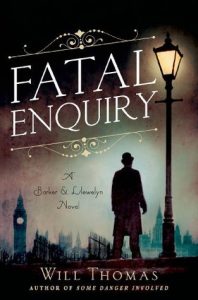 Last but not least there’s the resonance to the now in this story that is very much steeped in the ‘then’. Because while the case may be about the Mafia, what’s behind their advent into London is a debate about immigration and immigrants and just how easy or difficult it should be and just how much enforcement is necessary and which way and upon whom the economic impacts have and will fall.
Last but not least there’s the resonance to the now in this story that is very much steeped in the ‘then’. Because while the case may be about the Mafia, what’s behind their advent into London is a debate about immigration and immigrants and just how easy or difficult it should be and just how much enforcement is necessary and which way and upon whom the economic impacts have and will fall. Because I’ve enjoyed this series so much so far, it was an obvious choice for one of this week’s Blogo-Birthday giveaways – especially as the latest book in the series,
Because I’ve enjoyed this series so much so far, it was an obvious choice for one of this week’s Blogo-Birthday giveaways – especially as the latest book in the series, 